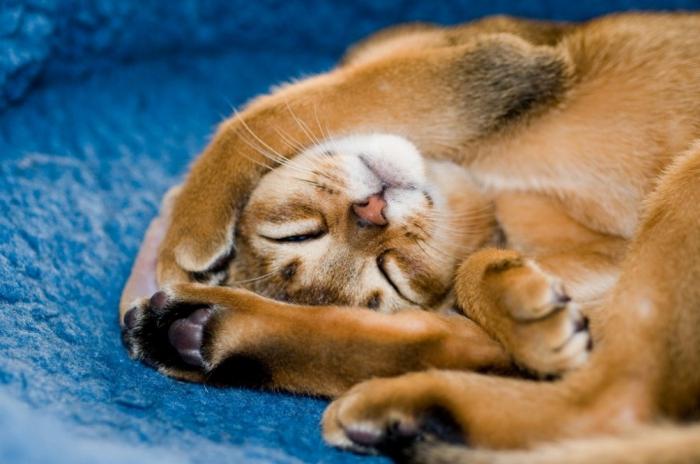Domestic cat
Most wild animals that weretamed by man, were for him a food source or an assistant in hunting, in a word, they all brought him some benefit. And what does a domestic cat give a person, what benefit does it bring?
This is an independent, very clean,which does not require special care for yourself, gives great pleasure to its owner when communicating. For sure, this is the main reason why he was not only tamed, but also left to live at home. And the domestic cat, in turn, became attached to a person who became useful to her, and as a result this long-standing union was created.
Let's try to return to history and figure out whowas the progenitor of a domestic cat. It turns out that her ancestors should be sought not in the European steppes or forests, but in the north of Africa. In all likelihood, this is a Nubian wild cat, which has the same structure of the skeleton and the volume of the brain. Researchers also stopped at the velvet species of the representative of the cat family, which lives in the Karakum and in the south of Iran. However, recently all these disputes ceased: scientists came to a common agreement - both these breeds are subspecies of one species of these animals.
The Egyptians considered the cat a sacred animal. Her murder was punished very severely, until the execution. And if she was dying, then her masters started mourning in the family. The authorities forbade the export of these cute animals to the border of Egypt.
In China, a domestic cat, as very usefullivestock, was very expensive. The purchase of it turned into a whole ritual. A specially invited expert determined the structure of the body, whether it would catch mice well, measure the size of the head and ears, and the thickness of the tail. Based on the size, he made the appropriate conclusions about the rumor, about hunting skills, about laziness or diligence. Much attention was paid to the fidelity of this pet. If he left for someone else's territory, they did not return it back. In China, this animal is a symbol of longevity, depicting it on greeting cards.
In Japan, a domestic cat turned out to beChina. He was brought by a certain monk, who was carrying very valuable Buddhist manuscripts. And that this valuable cargo is not gnawed by the mouse, in China, they put a clawed and mustachioed guard. Perhaps that is why the "first position" of cats in the country of the rising sun was the protection of monastery libraries. It was believed that if the emperor gives this little animal to someone, then he expresses a sign of his special disposition.
For centuries this pet was bred,was crossed to create new breeds, differing in color, size, and physique. And as a result of all these transformations and over-labor of breeders, a huge number of breeds have appeared. Here are some of them:
Himalayan, a hybrid of Persian and Siamese, takes its name from the same breed of rabbit with a very similar color - the muzzle, paws and tail are much lighter than the rest of the trunk.
Balinese - semi long-haired varietySiamese. This cat is very flexible and graceful, she has a long muscular body with blue, chocolate, lilac or red wool. Representatives of this breed are mobile and cheerful, although they are much more intelligent than their Siamese sisters.
Other representatives of the cat family -Egyptian Mau, descendants of those same Egyptian sacred animals. They can not endure loneliness, they are very sociable. These pets are always at their owner's side, doing the same as he does.
There are other breeds, such as havana, sphinxes andetc., however, the largest domestic cat among all the existing ones is the savannah, which has 15 kg of weight and 60 cm - the height of the withers. Active, curious, they are bred in very small numbers - there are only about ten thousand of them.
</ p>>




